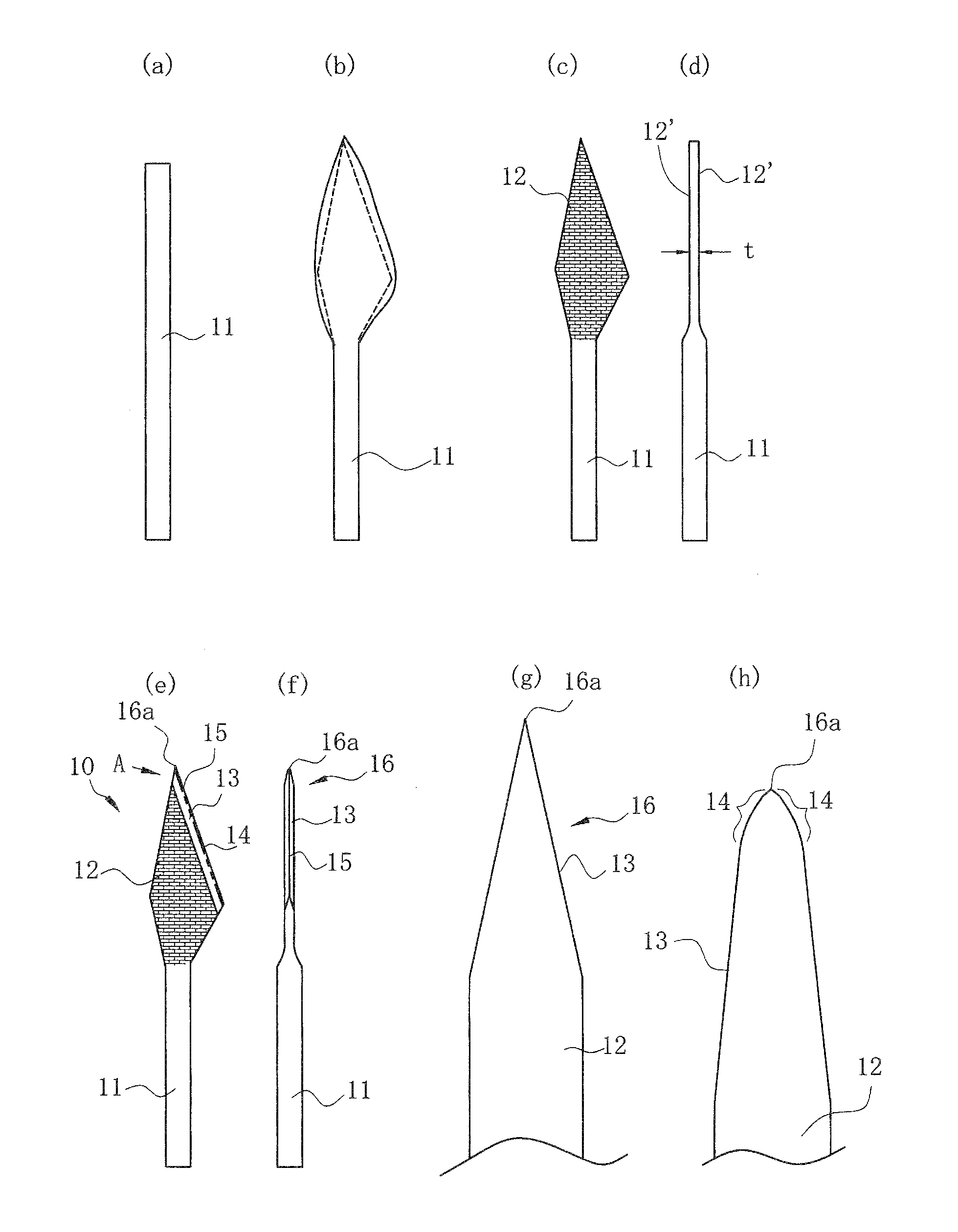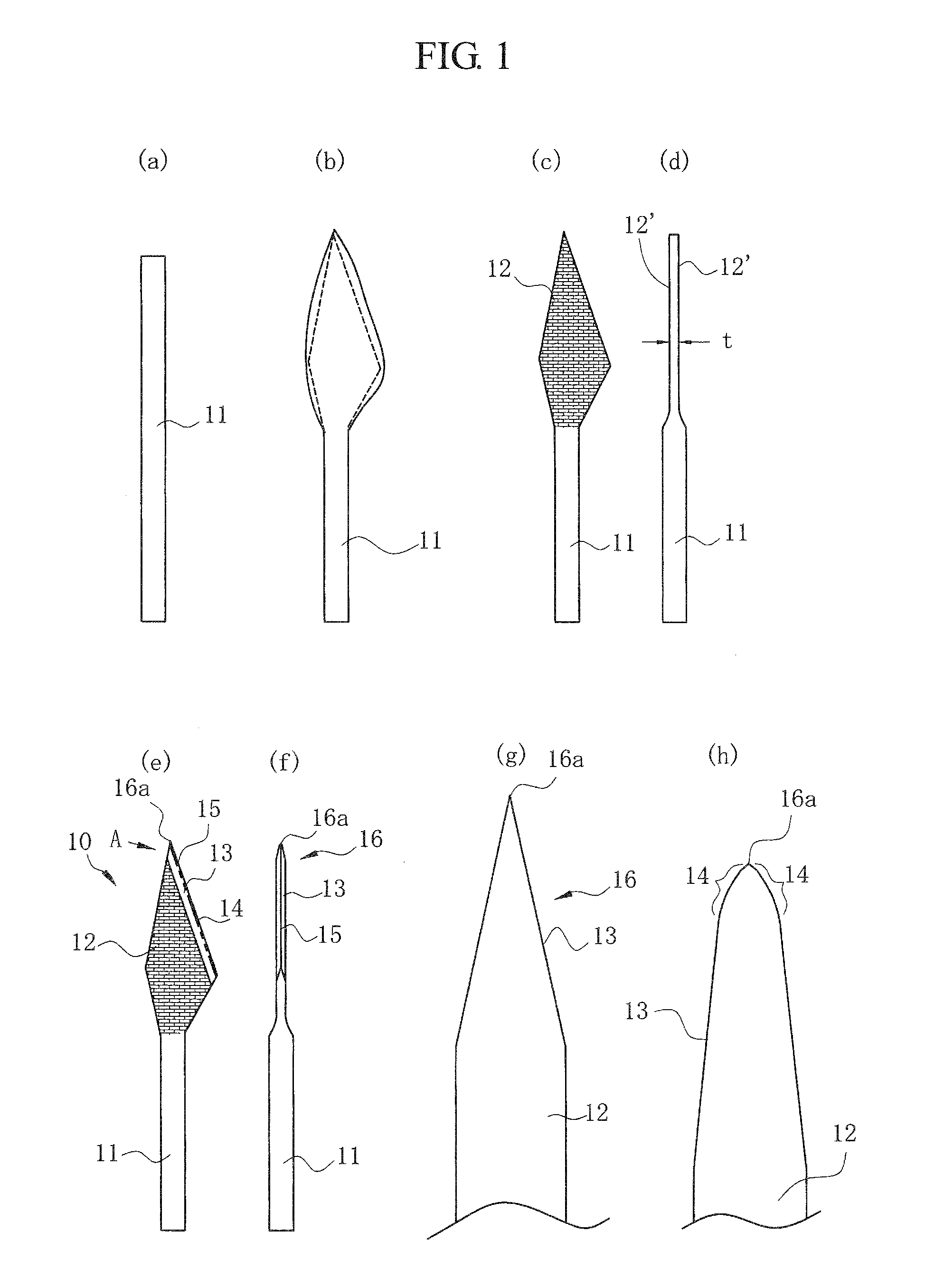Medical knife
a technology of medical knives and stainless steel wire, which is applied in the field of medical knives, can solve the problems that the austenitic stainless steel wire cannot be quenched nor achieve a predetermined hardness, and achieve the effects of preventing bending during use, easy use, and easy bending
- Summary
- Abstract
- Description
- Claims
- Application Information
AI Technical Summary
Benefits of technology
Problems solved by technology
Method used
Image
Examples
Embodiment Construction
[0033]An embodiment of the present invention is described while referencing the attached drawings.
[0034]FIGS. 1(a) to 1(f) are diagrams describing a manufacturing method for a straight knife 10 according to the present invention. To begin with, a raw, round bar 11 is cut at a predetermined length shown in FIG. 1(a). This is made from an austenitic stainless steel round bar having a fibrous crystalline structure. Then, as shown in FIG. 1(b), the front end side is flattened by a press, and excessive portions indicated by dotted lines are cut in a subsequent pressing step so as to have a planar pointed end, thereby forming an approximately rhombus cutting portion 12 viewed in the top view. As shown in FIGS. 1(c) and 1(d), both flattened surfaces 12′ are polished and made into smooth surfaces and made into a predetermined thickness t. The flattened surfaces 12′ of the cutting portion 12 are then made into irregular reflection surfaces through blasting. Making irregular reflection surfac...
PUM
| Property | Measurement | Unit |
|---|---|---|
| width | aaaaa | aaaaa |
| thickness | aaaaa | aaaaa |
| hardness | aaaaa | aaaaa |
Abstract
Description
Claims
Application Information
 Login to View More
Login to View More - R&D
- Intellectual Property
- Life Sciences
- Materials
- Tech Scout
- Unparalleled Data Quality
- Higher Quality Content
- 60% Fewer Hallucinations
Browse by: Latest US Patents, China's latest patents, Technical Efficacy Thesaurus, Application Domain, Technology Topic, Popular Technical Reports.
© 2025 PatSnap. All rights reserved.Legal|Privacy policy|Modern Slavery Act Transparency Statement|Sitemap|About US| Contact US: help@patsnap.com



